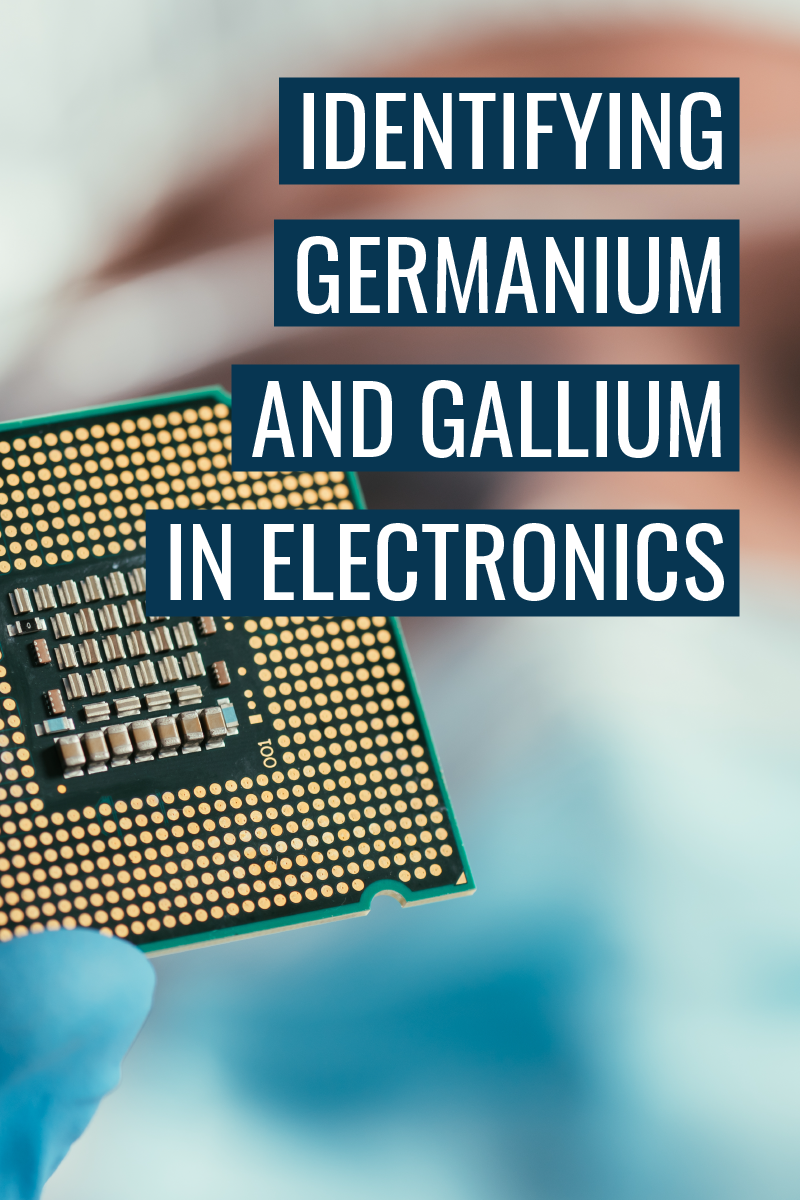Export Controls
July 27, 2023 | Written by GreenSoft Technology, Inc.
Identifying Germanium and Gallium in Electronics
 GreenSoft Technology analyzed our parts database to identify the most common parts containing Germanium and Gallium
GreenSoft Technology analyzed our parts database to identify the most common parts containing Germanium and Gallium
Recent international developments have sparked concerns in the electronics industry regarding the implementation of export controls on certain substances. Among the affected substances are Germanium and Gallium.
Classified as "Heavy Metals,” Germanium and Gallium are widely used in various electronics applications, including military technologies.
With these developments potentially causing supply chain disruptions, GreenSoft Technology has conducted an in-depth study to help electronics manufacturers prepare for potential challenges.
We analyzed our Full Material Declaration (FMD) database, which contains information on millions of components, to identify parts that contain Germanium and Gallium.
Our study revealed that 7,061 parts from 308 manufacturers in our FMD Database were found to be at-risk due to the presence of Germanium or Gallium. 2,203 parts from 159 manufacturers contain Germanium; and 5,328 parts from 227 manufacturers contain Gallium.
Identifying the most common parts containing Germanium
Germanium is a lustrous, grayish-white metalloid with excellent semiconductor properties. It is often used as a dopant in semiconductors to enhance their electrical properties. Germanium is commonly found in electronic components like transformers, inductors, opto-electronics, modules, and PCBs. Its use as a semiconductor material makes it essential in diodes, transistors, and other electronic devices. Additionally, due to its semiconducting properties, Germanium is frequently used for aerospace and defense applications in infrared optics, night-vision systems, and various military sensors.
The analysis of our FMD Database revealed 5 types of parts most likely to contain Germanium:
Transformers: Out of the millions of parts in our FMD database, 442 transformers were found to contain Germanium. Germanium enhances the efficiency of power transformers used in electrical circuits.
Inductors: The search identified 329 inductor parts containing Germanium. Inductors utilize Germanium’s properties to store and release energy in electronic circuits.
Opto-Electronics: Our analysis found that 289 opto-electronic parts contained Germanium. Germanium plays a key role in the production of opto-electronic devices, such as infrared sensors and photodetectors.
Modules: We identified 249 modules containing Germanium. Germanium's inclusion in modules is generally based on its ability to function as a key component in specific circuitry or signal processing tasks.
Printed Circuit Boards (PCBs): Our search found that 227 PCBs contained Germanium. Germanium assists in the smooth operation of PCBs, which are essential components in electronic devices.
Other parts found to contain Germanium include ICs, Crystal/Oscillators, Switches/Relays, Connectors, Memories, Other Active Parts, Resistors, Other Mechanical Parts, Adhesives, Cables/Cable Assemblies, Filters, Discrete Semiconductors, and Capacitors.
Identifying the most common parts containing Gallium
Gallium is a soft, silvery metal with a low melting point, making it ideal for certain electronic applications. Gallium is predominantly found in opto-electronics, ICs, modules, connectors, and switches/relays. Its wide use in opto-electronic devices stems from its light-emitting properties. Gallium-based compounds are also used for aerospace and defense applications in radars, electronic warfare systems, and high-frequency communication technologies.
Our research found that Opto-Electronics were the most common parts found to contain Gallium by a wide margin. The analysis of our FMD Database revealed 4 types of parts most likely to contain Gallium:
Opto-Electronics: Gallium is extensively used in light-emitting diodes (LEDs) and other opto-electronic devices. 3,781 opto-electronic parts in our database were found to contain Gallium.
Integrated Circuits (ICs): 549 IC parts in our database were found to contain Gallium. Gallium is used in ICs as a semiconductor material, playing a crucial role in the construction of integrated circuits that power electronic devices.
Modules: Our analysis found that 477 modules contained Gallium. Gallium is used in modules to enhance the functionality of opto-electronic devices, such as light-emitting diodes (LEDs), contributing to various applications, including fiber-optic communication and high-speed data transmission.
Connectors: We identified 239 connector parts containing Gallium. Gallium enhances the performance of electronic connectors used in various devices.
Other parts found to contain Gallium include Switches/Relays, Other Mechanical Parts, Other Active Parts, Discrete Semiconductors, Memories, Cables/Cable Assemblies, Enclosures/Structure Support, Transformers, Resistors, Fasteners, Filters, Crystals/Oscillators, PCBs, Capacitors, and Other Passive Parts.
Navigating Supply Chain Disruptions
With a significant number of parts containing Germanium and Gallium at risk due to export controls, electronics manufacturers should take proactive measures to mitigate potential supply chain disruptions.
Identifying which components in your supply chain are likely to contain Germanium and Gallium is crucial for manufacturers to strategically plan for any contingencies that may arise from international export controls.
GreenSoft Technology’s Data Services solution can assist companies in identifying Germanium and Gallium in their products by collecting chemical data from their supply chain. Our data collection team will contact your suppliers on your behalf to obtain data on the substances contained in your products and components, and validate that data for completeness and accuracy.
Additionally, GreenSoft Technology can help source replacement suppliers, and generate compliance reports for various global environmental regulations. We also offer GreenData Manager software so you can manage your company’s substance database and easily generate substance and compliance reports.
Contact us to learn more.





